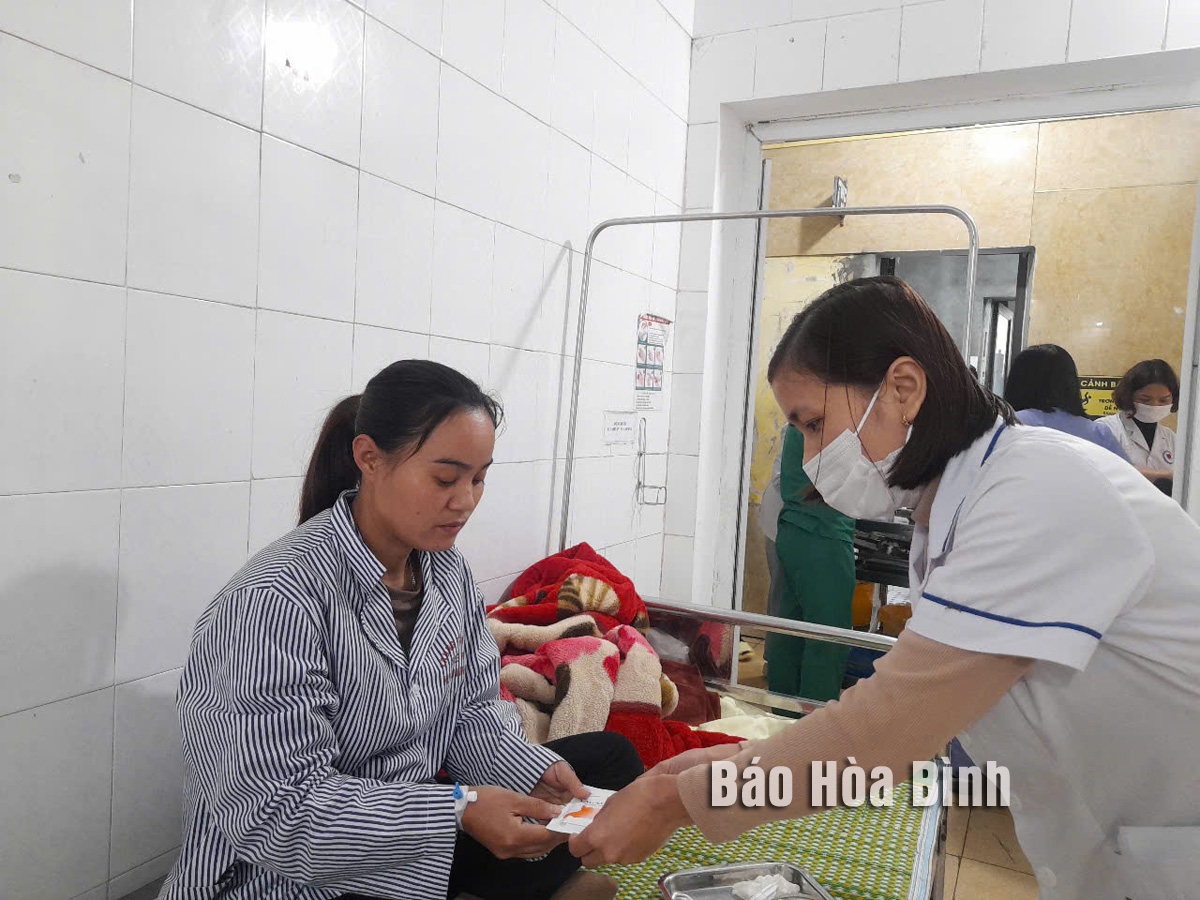
Seeing that traditional medicine, together with modern medicine, plays an important role in ensuring comprehensive health care for people, the Hoa Binh provincial Traditional Medicine Association has continuously built and strengthened its organisation while guiding members to fulfil their mission to ensure public health.

A health worker of the
traditional medicine division at the Health Centre of Kim Boi district, gives
medication to a patient.
Hoa Binh is a mountainous province with rich medicinal resources
and many valuable folk remedies of ethnic minorities. For years, its health
sector has focused on training and developing personnel to bring into play the
precious traditional medicine heritage for public health care.
At present, the provincial Traditional Medicine Association
gathers nearly 2,000 members. The province also completed a traditional medince
system from the provincial to grassroots levels, including the provincial
Traditional Medicine Hospital, the Traditional Medicine Department at the
provincial General Hospital, and those at 10 district-level health centres.
A tota of 57 private traditional medicine establishments have
been licenced in the province, including five private general clinics that
combine traditional and modern medicine; 28 traditional medicine clinics; 23
clinics using traditional remedies; and three others supplying traditional
medicine services.
Chairman of the provincial Traditional Medicine Association Vu Kim San said
that the association has frequently organised training courses for its members
to help them improve capabilities and grasp the Party's guidelines, the State's
policies and laws, and the ordinance on medical practice.
The association has also held workshops to share experiences in
using medicinal plants and folk remedies. Last year, the association and the
provincial Association of the Elderly signed and implemented a cooperation
programme for health care using traditional medicine for senior citizens. It
also collaborated with the Vietnam University of Traditional Medicine to
conduct three studies on medicinal plants in Hoa Binh.
To ensure an abundant source of medicinal materials for
treatment, all-level chapters of the provincial Traditional Medicine
Association have continuously encouraged members to develop medicinal gardens.
To date, the province has 175 collective medicinal gardens and 1,676 family
medicinal boxes among association members. Last year, these facilities
harvested and purchased 2,028 tonnes of various medicinal materials.
The association has also regularly provided charitable medical check-ups and
treatment for residents in remote and disadvantaged areas. More than 26,500
people across Hoa Binh province received medical examination and treatment
through such charity activities in 2024.
According to the
provincial Health Department, last year, more than 269,340 patients received
treatment in traditional medicine, with 235,780 treated with herbal medicine
and over 33,520 treated with non-pharmaceutical methods such as massage,
acupressure, and acupuncture. The treatment proved effective, winning recognition
and recommendation by patients in the province and other localities.
In addition to engage different stakeholders in promoting traditional medicine
and improving the quality of traditional medicine services, the provincial
Traditional Medicine Association has actively implemented the inter-sectoral
resolution it signed with the Department of Health to combine traditional
medicine with modern one, helping to better fulfil the mission of caring for
the people’s health.
More than just an information technology teacher, Bui Van Nien is an inspiring figure who has nurtured the scientific curiosity and creative spirit of students in Vietnam’s ethnic minority communities.
Da Bac is the most disadvantaged mountainous district in Hoa Binh province, with ethnic minorities accounting for about 90% of its population. Over the past years, the district has mobilised resources to implement ethnic policies to improve the quality of life of local people.
In recent years, Hoa Binh province has consistently prioritised the protection, care, and education of children, particularly those from ethnic minorities and disadvantaged backgrounds, by creating a safe, healthy, and nurturing environment for their all-round development.
The Steering Committee for Tobacco Harm Prevention and Control of Hoa Binh province, in coordination with the Tobacco Harm Prevention and Control Fund, held a ceremony on May 28 in response to the World No Tobacco Day (May 31) and the National No Tobacco Week (from May 25 to 31). The event was chaired by Nguyen Van Toan, Standing Vice Chairman of the provincial People’s Committee and head of the Steering Committee.
Since 2021, the Center for Industrial Promotion and Industrial Development Consulting (CIIDC) under the Department of Industry and Trade has been implementing a school lighting model as part of the plan for using energy efficiently and economically in Hoa Binh Province in the pẻiod of 2021 - 2025. This model not only aims to improve the learning conditions and enhance the education quality, but it also promotes the message of energy saving, energy security, environmental protection and contributes to the goals of socio-economic development.
In the 2024 - 2025 school year, the entire Hoa Binh provincial education sector includes 520 educational institutions and schools. Among them are 13 ethnic boarding schools with 153 classes and 4,487 students. Four of these schools have met national standards, reaching 30.7 percent.



